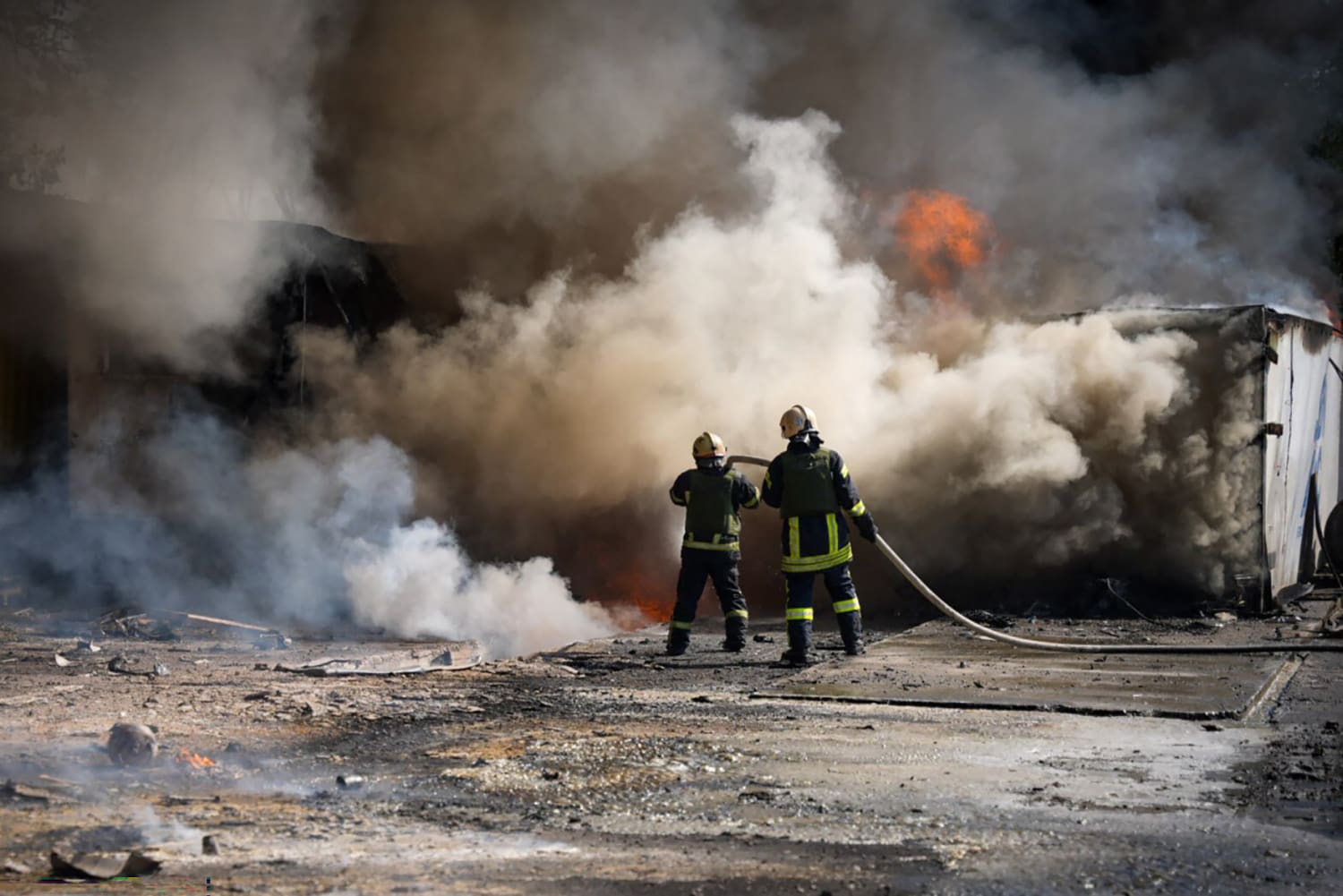Russia launched one of the largest attacks of the war, firing more than 600 drones and missiles at targets across Ukraine in the early hours of Sunday. At least four people were killed in Kyiv, including a 12-year-old girl, while dozens were injured in the capital, Zaporizhzhia, and surrounding areas. Ukrainian air defenses managed to shoot down most of the drones and many cruise missiles, but the sheer scale of the strike highlighted the continuing threat despite recent increases in Western support.
Russian Strikes Devastate Civilians, Prompt NATO Alerts and Heightened European Airspace Security
The bombardment caused widespread destruction, with residential areas and critical infrastructure hit. The Cardiology Institute in Kyiv was damaged, resulting in two fatalities. Photos from the capital showed smoke lingering as residents attempted to go about their daily routines amid ongoing strikes. Officials, including President Volodymyr Zelensky’s chief of staff, described the offensive as a “war against civilians.”
Poland scrambled fighter jets as a precaution during the attacks, citing the need to secure its airspace after recent drone incursions from Russia. Other European countries, including Norway and Denmark, reported unknown drone activity near sensitive sites. NATO leaders meeting in Latvia pledged to strengthen air and land defenses in the Baltic region, promising a “resolute and proportionate response” to any threats.
Ukraine Strengthens Defenses, Expands U.S. Arms Deal, and Counters Russian Escalation
In response, Ukraine is boosting its air defenses with new Patriot missile systems from Israel and Germany, while also advancing negotiations for a $90 billion arms deal with the United States. Zelensky said the agreement, discussed in a recent meeting with U.S. President Donald Trump, would give Ukraine the capacity to “fight and win,” marking a significant policy shift after earlier debates about territorial concessions. Kyiv is also enhancing its long-range strike capabilities, focusing on Russian energy infrastructure.
The strikes underscored growing fears of escalation beyond Ukraine’s borders. Ukraine is offering to share its drone defense expertise with Western allies as Russian aerial incursions spread across Europe. Meanwhile, Russian officials insisted the strikes targeted Ukrainian military industries and denied any plans to attack NATO or EU members. At the UN General Assembly, Russian Foreign Minister Sergei Lavrov dismissed Western warnings as “provocations,” even as the conflict’s scope increasingly affects global security dynamics.

Leave a Reply